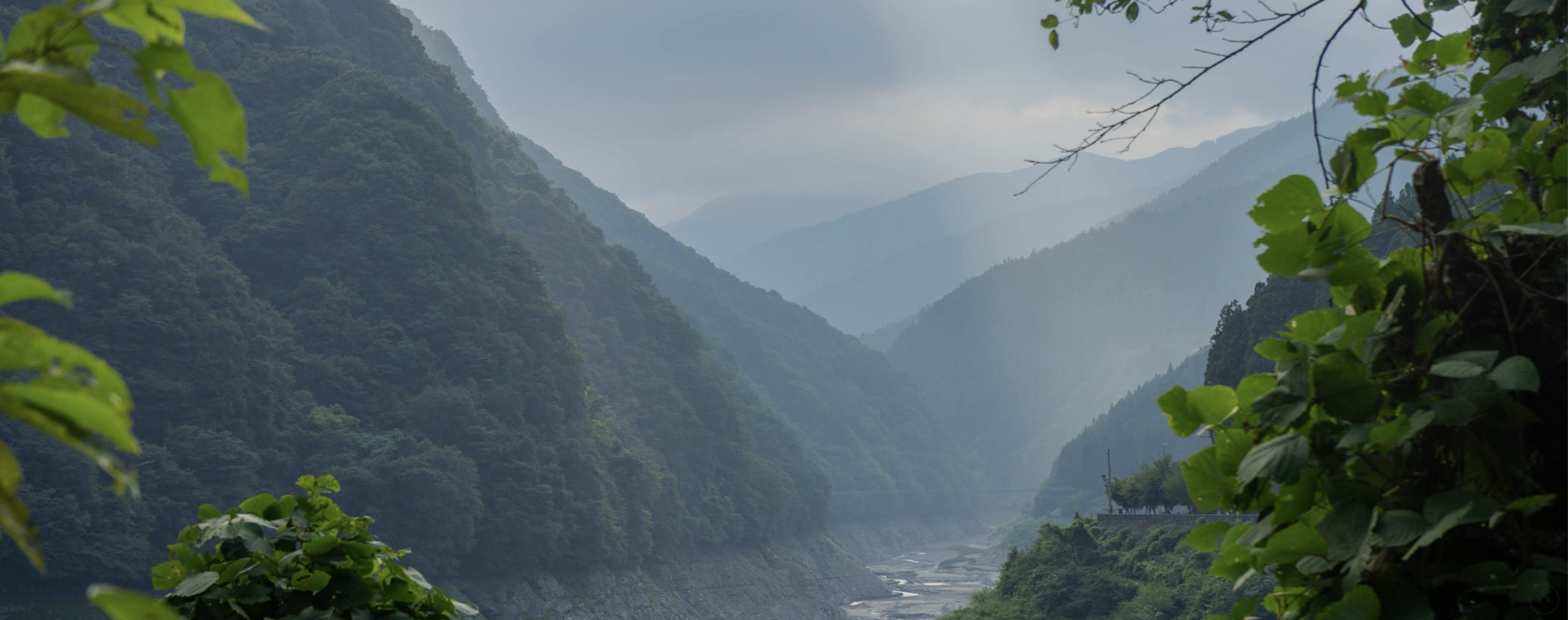We spoke to Alex K.T Martin of the Japan Times on his phenomenal series looking at how Japan’s native wolf population became extinct, and the ecological, cultural and spiritual voids spawned by their absence.
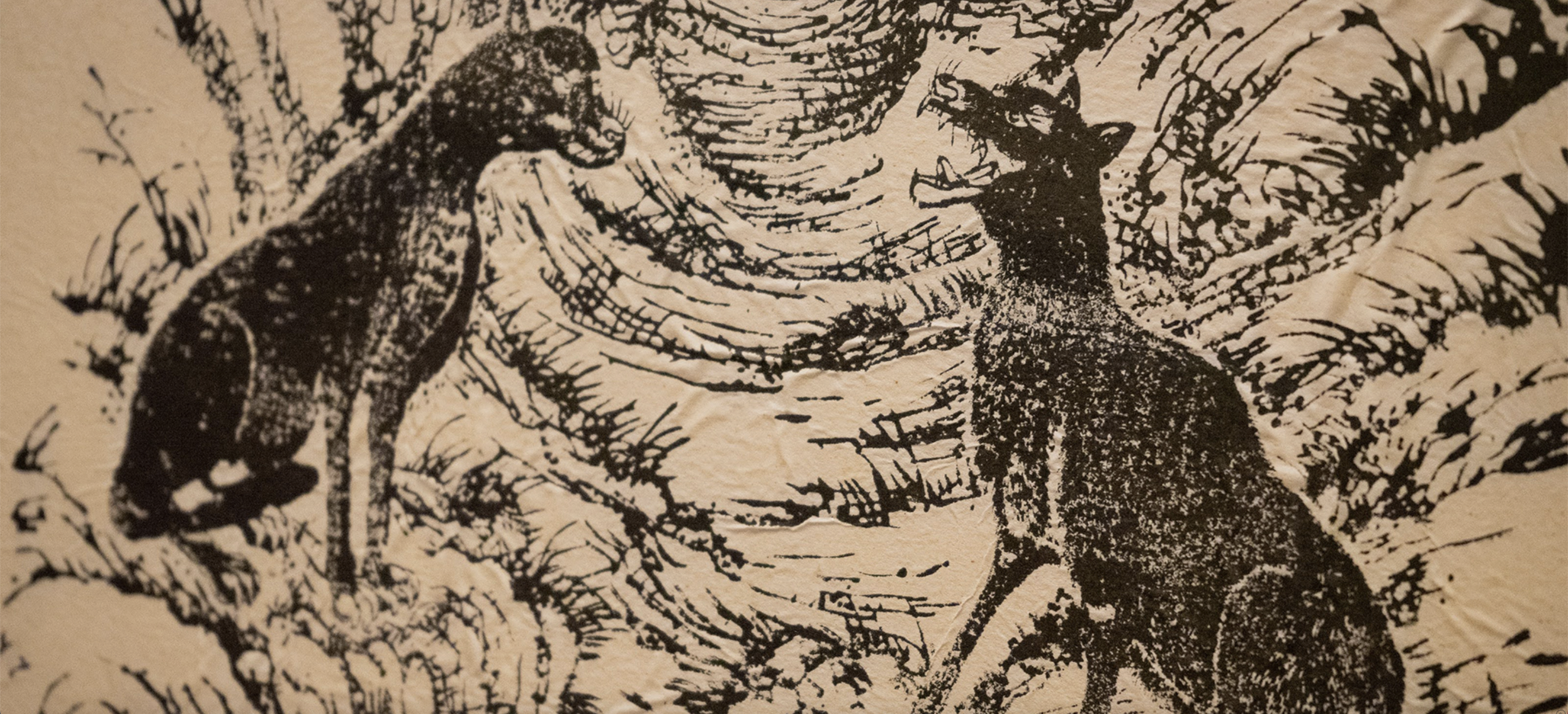 A woodblock print of a pair of wolves is displayed at Mitsumine Shrine, arguably the mecca of Japan’s wolf worship.| OSCAR BOYD / JAPAN TIMES
A woodblock print of a pair of wolves is displayed at Mitsumine Shrine, arguably the mecca of Japan’s wolf worship.| OSCAR BOYD / JAPAN TIMES
Asia Art Tours: A beautiful undertone of your Japan Times feature on wolves in Japan is how human beings have lost something by being so removed from nature – that wolves are not just an ‘animal’ but, for many, part of a larger vision of what community should be.
To start, why did you, or your interview subjects, feel that exploring Japans’ extinct wolves is topical or relevant to the larger societal and political questions facing contemporary Japan?
Alex Martin: There are many dimensions to the story about the Japanese wolf. Some people, (including myself initially) are drawn to accounts of modern-day sightings and the possibility that the supposedly extinct animal may still be out there in the wilderness. Others are intrigued by the zoology and other science. Finally, the rich trove of wolf mythology and folklore has been a source of interest for many researchers and artists.
The Japanese wolf has historically been portrayed favorably as a divine messenger and protector of farmland from wildlife crop-raiders. As I mention in my series, there are still many shrines in Japan that deify the animal and offer parishioners paper talismans that invoke the wolf to ward off evil and repel misfortunes including burglary and fire.
The common thread tying all this together may be the way the wolf symbolizes what Japan lost as it embraced industrialization in the late 19th century. The beast disappeared as the nation marched toward modernization and war. In the process, the woodlands eventually were razed and replanted, fundamentally altering the ecological landscape. In that sense the wolf, and the loss of the apex predator, could symbolize nostalgia for the nation’s pre-industrial past.
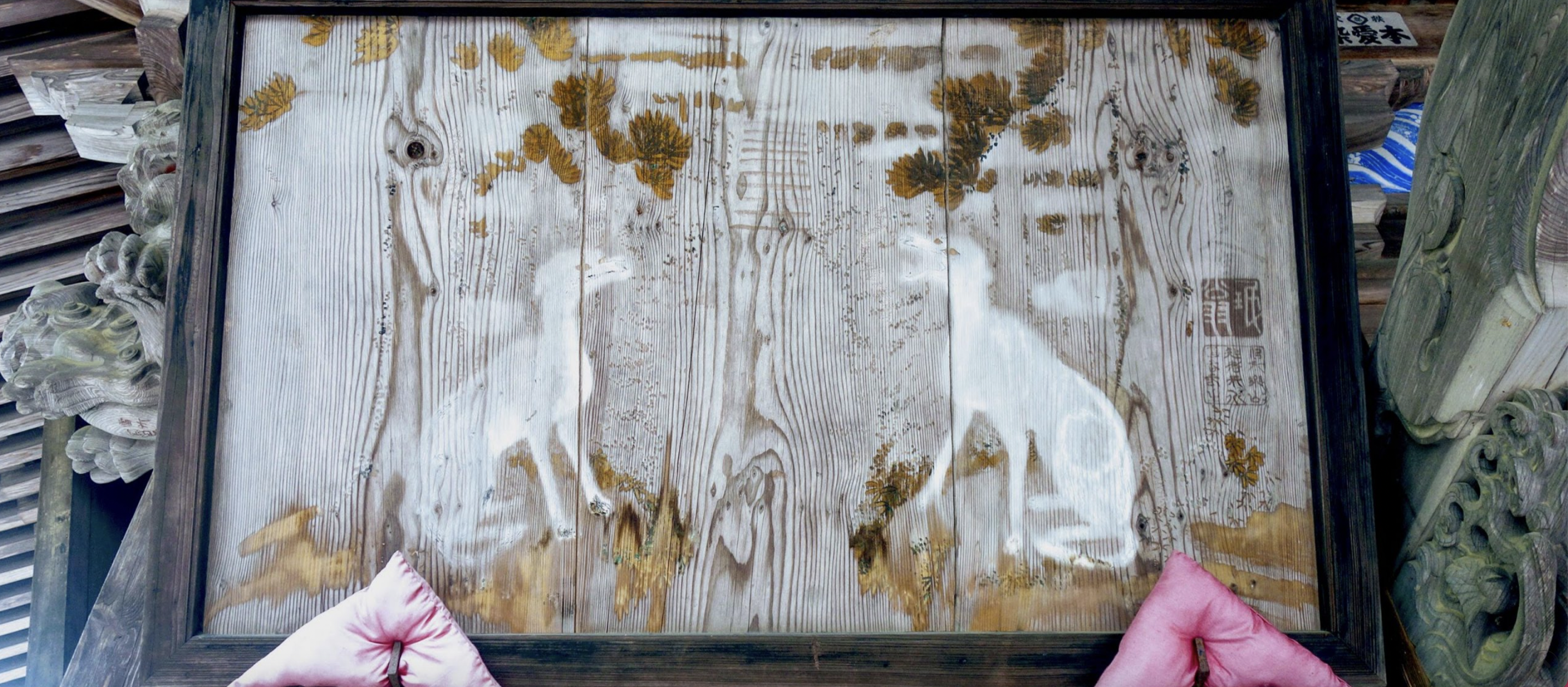 painting of two white wolves hangs under the roof of Ryokami Shrine, also known as Ryuto Shrine, in Ogano, Saitama Prefecture. | ALEX K.T. MARTIN/JAPAN TIMES
painting of two white wolves hangs under the roof of Ryokami Shrine, also known as Ryuto Shrine, in Ogano, Saitama Prefecture. | ALEX K.T. MARTIN/JAPAN TIMES
Asia Art Tours: Your article series does an excellent job looking at how changes in government and capitalism led to the wolf’s demise. In broad strokes, could you explain how Japan’s wolves met their end?
Alex Martin: As mentioned, the Japanese wolf was revered as divine messengers and for preying on wildlife pests such as wild boar and deer. The species fit in well with the archipelago’s predominantly agricultural history and reliance on rice and other crops as pillars of its economy. But acceptance and worship changed to enmity after wolves began attacking horses in the 17th century.
Meanwhile, rabies appeared among dogs in the mid 1730s and rapidly spread across Japan, eventually reaching wolves and turning some into crazed man-killers. That triggered large-scale wolf hunts. After the Meiji Restoration, killing wolves became national policy, while deadly canine distemper epidemics transmitted from Western dogs infected wolves, leading to the species’ disappearance from the archipelago.
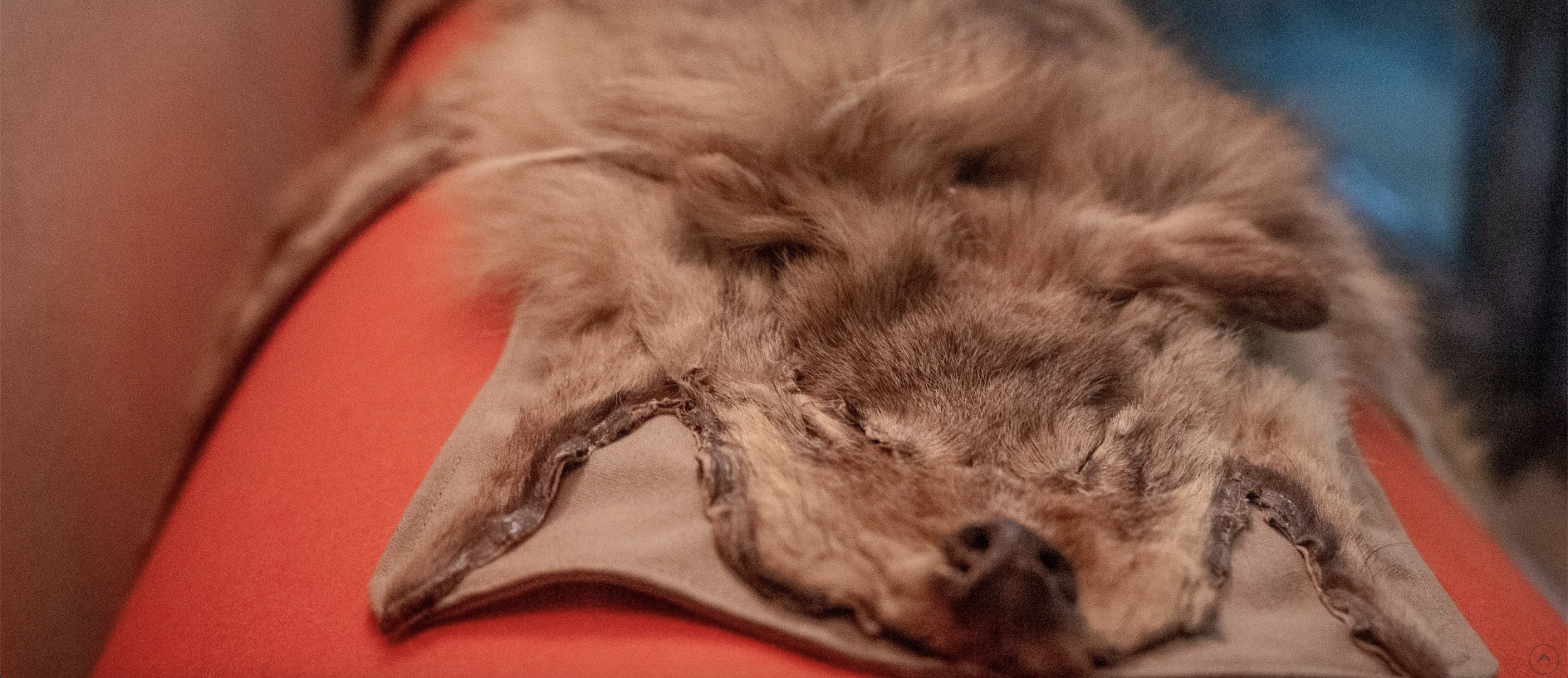 A pelt of a Japanese wolf stored at a museum adjacent to Mitsumine Shrine in Chichibu, Saitama Prefecture | OSCAR BOYD / JAPAN TIMES
A pelt of a Japanese wolf stored at a museum adjacent to Mitsumine Shrine in Chichibu, Saitama Prefecture | OSCAR BOYD / JAPAN TIMES
Asia Art Tours: As someone who experienced Japan by hiking the Nakasendo, exploring the Miyazaki-inspiring forests of Naoshima and watching cranes fall in love amid Hokkaido snowfall, I’m enthralled with the idea of bringing back Japan’s wolves. On a practical level, do scientists and conservationists believe Japan’s wolf could be brought back? And how are they making this ‘pitch’ to the business and government leaders of Japan?
And if wolves were brought back today would they meet the same demise at the hands of these same forces? Or could modern capitalism or government find a way to accommodate Japan’s wolves?
Alex Martin: What might happen if wolves were brought back today is an interesting question, but we need to understand the scale of the change that befell this nation over the past century before making any hypothetical assessments. While mountains and forests still occupy a majority of Japan’s land mass, trees have been replanted and rivers dammed. Cities are leaving an ever-growing urban footprint. The nation’s population has nearly tripled since 1905, the year the last known Japanese wolf was caught. That means the distance between Japan’s wilderness and human habitat has narrowed to the point where we regularly see animals – deer, bear, wild boar and monkeys, to name a few – visiting human communities to scavenge for food.
Would wolves, if unleashed into the nation’s forests, do the same, causing us harm by attacking domestic animals or even humans? Zoologists say wolves are extremely wary of people and aren’t aggressive toward them by nature, but that fear persists among the public. For their part, would wolves be able to adapt and survive in the new environment?
The Japan Wolf Association has been lobbying to reintroduce wolves into the country to curb the booming population of deer and wild boar and, so doing, to restore the ecological balance. The association’s founder, professor Naoki Maruyama, has written numerous books and given many speeches advocating the project. But he told me that public suspicion of and opposition to the idea, despite showing some relaxation, remain strong.
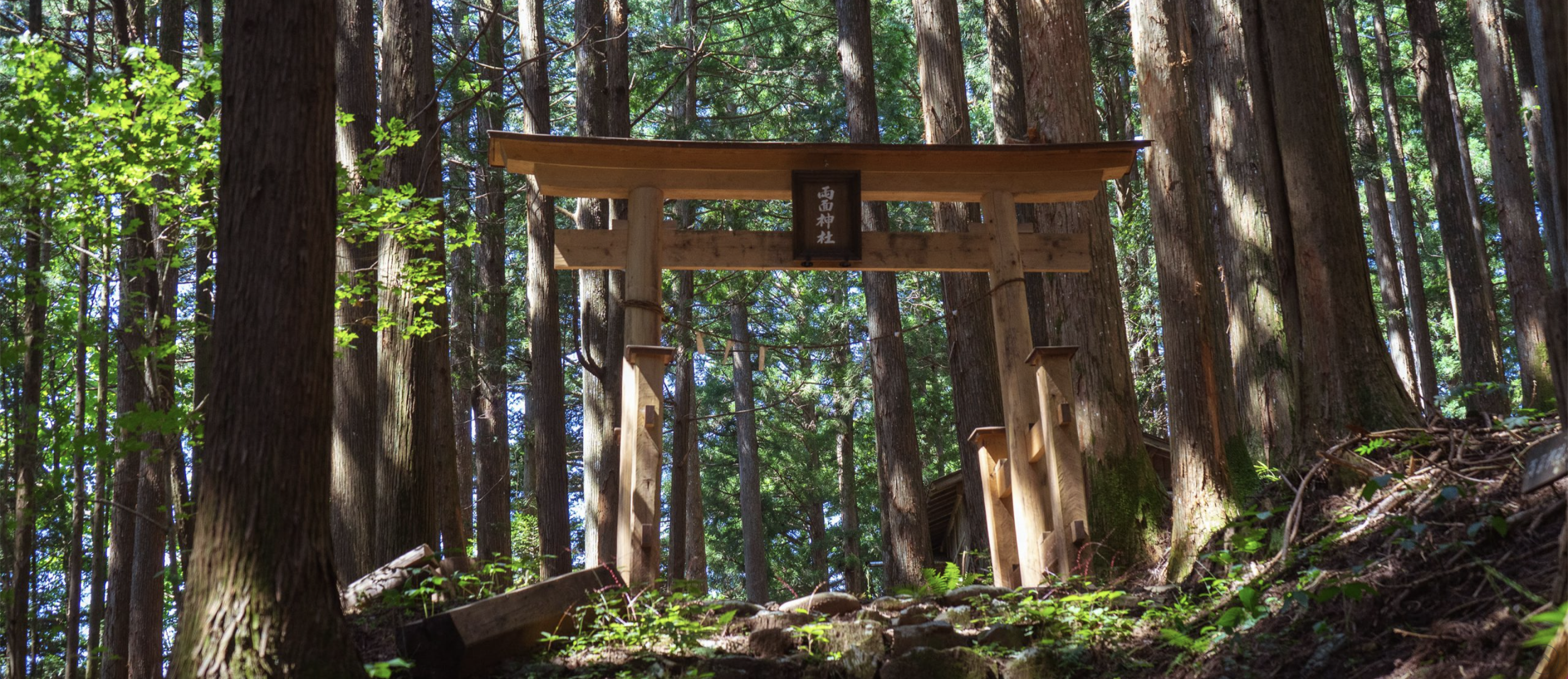 Ryomen Shrine in the mountains of Chichibu’s Otaki district is considered to be one of the oldest shrines in the region dedicated to wolf worship. | OSCAR BOYD / JAPAN TIMES
Ryomen Shrine in the mountains of Chichibu’s Otaki district is considered to be one of the oldest shrines in the region dedicated to wolf worship. | OSCAR BOYD / JAPAN TIMES
Asia Art Tours: Your series covered both those searching for Japan’s wolves and also individuals who wish to rebuild the ecosystems that once sustained these animals. What do Japan’s ecosystems currently lack that would be needed to sustain wolves? How would these ecosystems need to be rebuilt or ‘rewilded’?
And if Japan’s ecosystems were ‘rewilded’ what positive impacts do environmentalists say this would have on quality of life for Japan’s citizens, even if did not lead to the reappearance of wolves?
Alex Martin: While woodlands account for two-thirds of Japan’s land mass, around 40% are artificially planted forests of mostly cedar and cypress trees, a result of a government-led reforestation campaign that saw millions of hectares of deciduous and mixed forestland wiped out and replanted with fast-growing conifers. While the program was aimed to feed growing housing and energy demand, cheap foreign imports began entering Japan’s market in the late 1960s and these evergreens were gradually left unattended, resulting in dark, dense, unhealthy forests. What happens then? Overcrowded evergreen forests limit undergrowth, causing surface soil erosion that leads to landslides and flooding – phenomena that seem to be occurring with alarming frequency in recent years due to global warming.
Environmentalists note that Japan’s woodlands had been home to a diverse range of broadleaf trees providing the necessary ecosystem to support a wide variety of species, including wolves. Efforts are under way to bring back that diversity. In my series, I mention Akaya Forest, a state-owned 10,000-hectare plot of woodland in the mountains of Gunma Prefecture that’s being replanted and restored to more diverse, mixed forests interspersed with meadows. But projects like this require significant investments and time, and I can’t see the majority of Japan’s vast forestland receiving similar treatment anytime soon
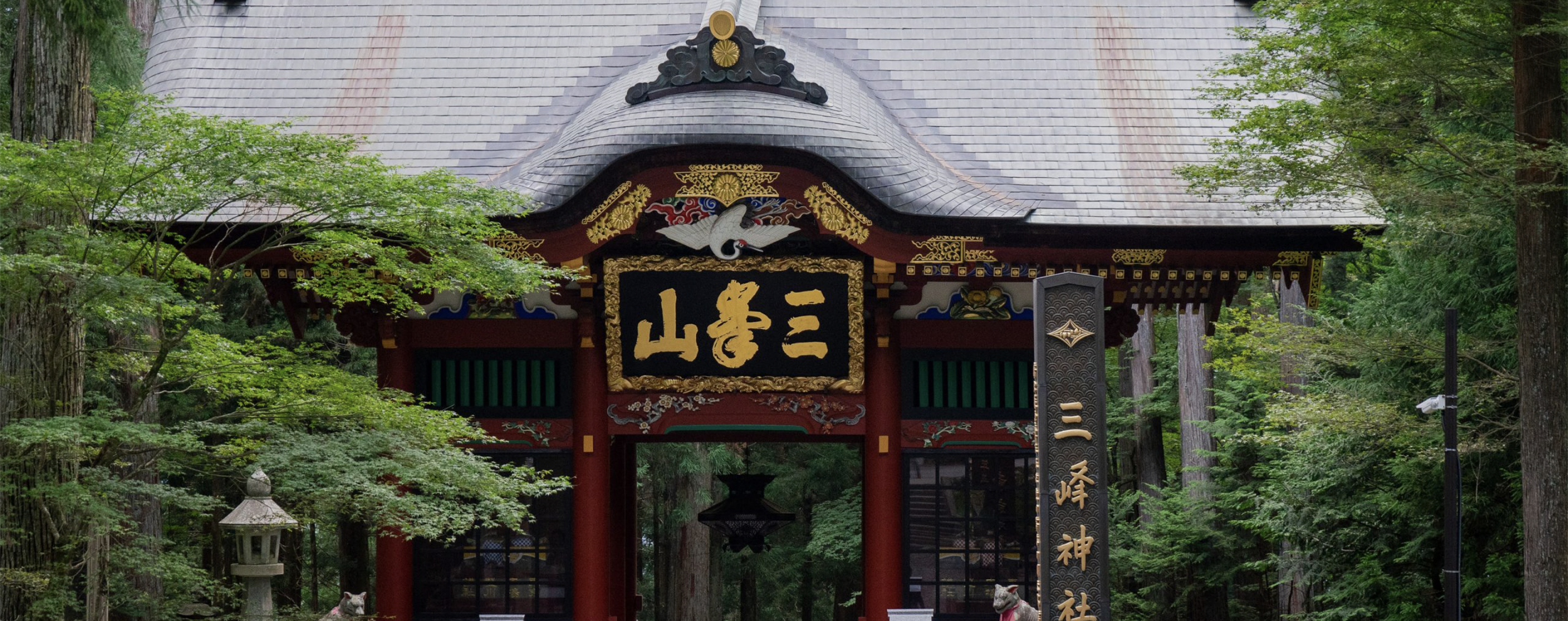 The main gate at Mitsumine Shrine, Saitama Prefecture | OSCAR BOYD / JAPAN TIMES
The main gate at Mitsumine Shrine, Saitama Prefecture | OSCAR BOYD / JAPAN TIMES
Asia Art Tours: I had no idea there were places like Mitsumine Shrine that worshiped wolves or how wolves were seen as part of the community in places like Chichibu Province. Did the eradication of the wolf accelerate the abandonment of Japan’s rural communities? And how could the reappearance of the wolf help revitalize Japan’s countryside?
And if the wolf is still out there (or could be brought back to life) what would this mean in terms of bringing values, beliefs or spirituality that right now are also ‘endangered’ or ‘extinct’ in Japan?
Alex Martin:I don’t think the death of the wolf has much to do with the rural depopulation we’ve been seeing for the past few decades, which seems more of a result of an aging population and rural-to-urban migration.
I tend to think the wolf, while worshipped in many parts of Japan, also reflected the primal fear people used to harbor toward the wilderness – so much so that the wolf became symbolic of the mountains themselves. That awe, I believe, has survived today in the form of wolf-worship practiced in shrines and communities in the Chichibu region, among other areas in the nation. For people like Hiroshi Yagi, the septuagenarian who’s been searching for the beast for over half a century, finding the wolf is a quest to retrieve what the Japanese have lost, both spiritually and environmentally. For those wanting to reintroduce wolves, it represents a step toward restoring the country’s biodiversity. And looking at the quantities of literature and artworks dedicated to the beast, I think its symbolic relevance continues to resonate even over a century after its supposed demise.
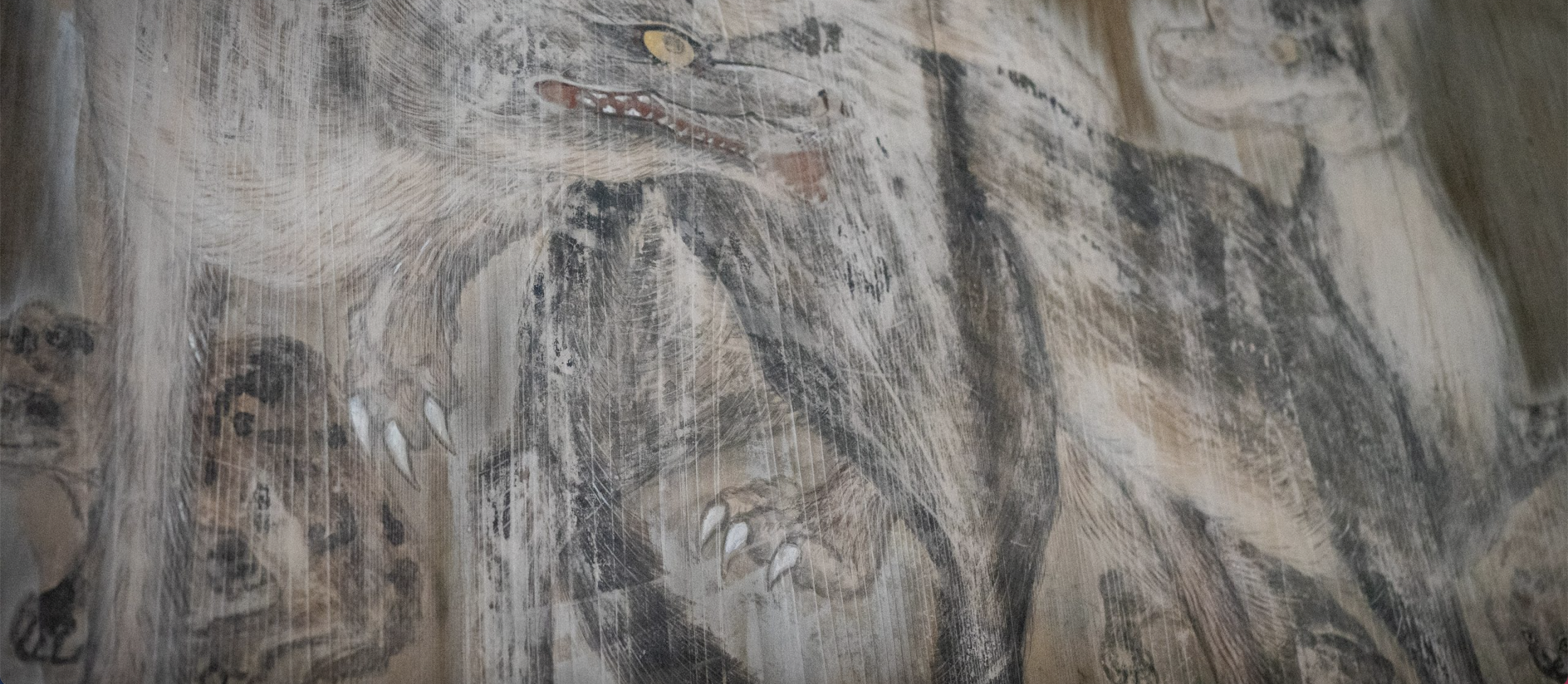 A painting depicting shinken ubutate, or the birth of the “divine dog,” stored at Mitsumine Shrine’s museum in Chichibu, Saitama Prefecture. | OSCAR BOYD / JAPAN TIMES
A painting depicting shinken ubutate, or the birth of the “divine dog,” stored at Mitsumine Shrine’s museum in Chichibu, Saitama Prefecture. | OSCAR BOYD / JAPAN TIMES
For more with Alex K.T Martin, follow him on Twitter and be sure to check out his full series for the Japan Times on the disappearance of Japan’s wolves here: jtimes.jp/wolves
